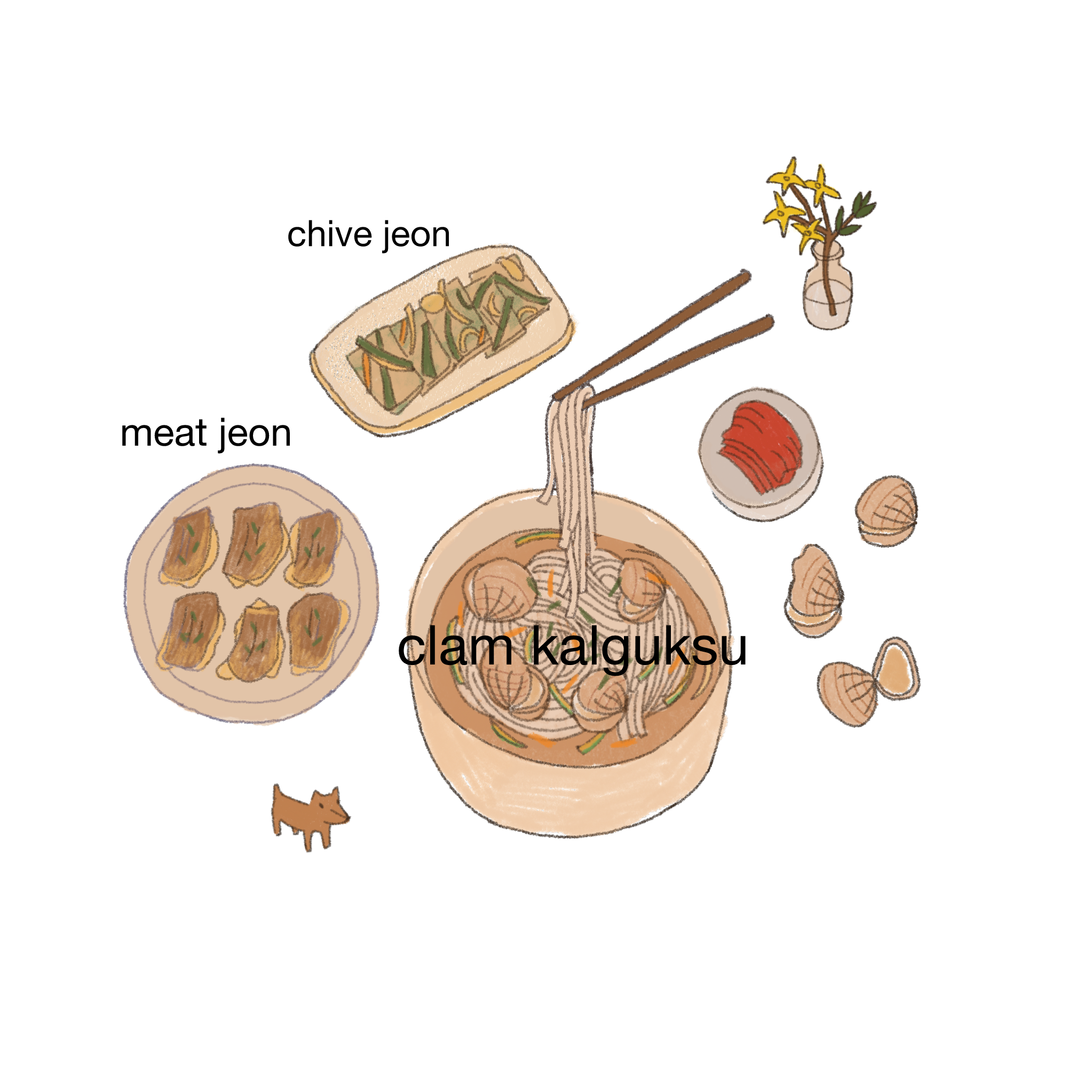April
Happy Spring! Although fresh clams can be found all year round in America, in South Korea the best tasting clam season is the Spring. Today I have a delicious clam noodle soup ready for you, so enjoy the recipe, and learn about the important historical day for South Korea.
4/19 The April Revolution (1960)
This is a historical date that commemorates an important South Korean student movement fighting for democracy. After the Korean war, Syngman Rhee was appointed as the first president of The Republic of Korea in 1948 but was later met with the nation’s outrage, first from his authoritarianism during his term, and finally his rigged reelection in 1960, which triggered the 4/19 revolution. A majority of the protesters were university students that demanded democracy. The protests were violently suppressed and intensified further after a student protestor was found dead. At the end of the protests, Syngman Rhee resigned and the Second Republic of Korea began.
GaeNaRi (개나리) Flower
the flora of South Korea serves as a marker of the four, distinct and beautiful seasons. One of them is this Gaenari, which is one of the most prominent flowers to start blooming early in the spring, and can be seen all over the parks and schools of South Korea.
maybe because they bloom in the spring near the schools, Gaenari also is associated with the new spring semester for grade school children.
There is a funny and random folklore about this Genari flower as well:
Once upon a time in Korea, a monk went around town to beg for alms. When he got to a big mansion of a rich man, the rich family threw him out, saying that “we don’t even have dog poop for you here!” When he went to a poor person’s home on the other hand, the poor family didn’t hesitate to give him a generous portion of rice. to thank them, the monk made the poor family a woven basket and disappeared. This woven basket was no ordinary basket though, because to the family’s surprise, the basket magically refilled itself with rice. With the abundance of rice, the poor family was no longer living in poverty, and was made rich. The rich family heard about this and became very jealous. so when the monk came around the following year, the rich man promptly donated rice to the monk, expecting a basket as well. The monk indeed made the rich man another woven basket. But “AIKU!!” said the rich man, when he saw that the basket was magically filling up with dog poop instead. The man went and buried this poop basket under a bridge, and from that bridge sprouted bright yellow, beautiful flowers in the spring, called Gaenari.
History of Kalguksu
The “Kal” in Kalgusku means “knife” and “guksu” means noodles, and Kalguksu is the beloved knife-cut noodle soup of South Korea. These piping hot noodles in thick broth is enjoyed in the warmer months. But ofc, it’s also perfect for a cold winter day. I would say this recipe is perfect for the springtime where the Bajirak Clams are in season, and the occasional dip in the temperatures leave us craving for something warm.
Historically, noodles like this used to be a luxurious delicacy, because flour was very laborious to mill. And this kalguksu in particular, when it used to be served in the royal palace, had some extra steps like boiling, rinsing, and then adding the noodles to a clear broth. These steps are pretty much skipped today, and the recipe has evolved into a thick broth that comes from boiling the noodles with the soup. During the korean war, flour became widely available thanks to the import from the states, and this is when the average household started to enjoy kalguksu from the comfort of their own home, nation wide.
Bajirak Kalguksu
Ingredients
Noodles from Scratch:
150g flour
75g water
pinch of salt
Store-bought fresh noodles (just as good): link to product
Broth ingredients:
1 cup of Bajirak clams
1/2 grey squash (or zucchini)
handful of shredded carrots
3 slices of serrano pepper
1 tsp soysauce
1 tsp fishsauce
salt to taste
1 tsp minced garlic
2 pieces of dried anchovies
1 piece of kombu
To make noodles from scratch, mix a 1:2 ratio of water and flour. knead 30 times until gluten bonds form. roll it out thin, then sprinkle some flour so the sheet doesn’t stick. fold over the dough and cut with a knife into noodles. (see this video for reference)
if you have fresh clams, soak them overnight in cold water in the refridgerator and clean them rigorously with salt and a brush
Boil 3 cups of water with Anchovies and kombu for 10 minutes.
if the clams are fresh, drop all the clams in the boiling water now and fish them out when they all open. set aside. If your clams are pre-boiled, add them to the broth for 1-2 min just so they are warm, and set aside.
remove the anchovies and kombu from the broth, and add all the chopped vegetables and boil 5 minutes. season with minced garlic, soysauce, fish sauce , and salt to taste.
rinse the fresh noodles in water once, then drop them into the boiling broth. boil about 6 minutes.
add the clams. enjoy



